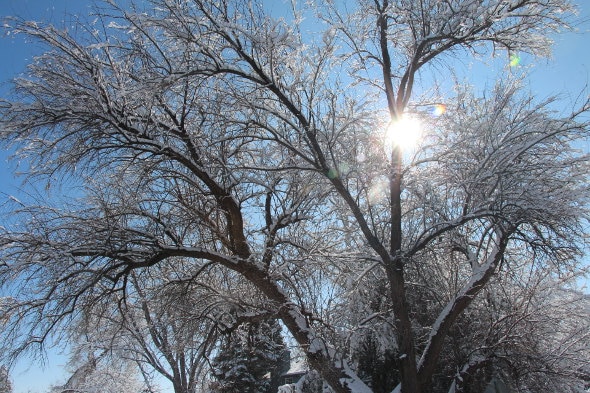Create a free profile to get unlimited access to exclusive videos, sweepstakes, and more!
Today the Sun Stands Still

Today is the real reason for the season: It’s the winter solstice! If you’re a purist, then raise your glass at 23:03 UTC (18:03 Eastern U.S. time), because that's the moment the solstice occurs.
There are a lot of ways to look at this, but they all boil down to the Earth’s axis being tilted with respect to its orbit. You’ve seen this with classroom globes; they’re tipped by about 23.5°. As it orbits the Sun, the North Pole of the Earth’s axis is always pointed pretty close to Polaris in the sky, which means that sometimes the axis is tipped toward the Sun, sometimes away. When it’s tipped as far from the Sun as it can be, that’s the moment of the winter solstice.
Illustration by Tfr000 on Wikipedia, Creative Commons License. In this animation, the winter solstice occurs when the Earth is to the far left part of its orbit, and the northern axis points away from the Sun.
Of course, when the northern pole is tipped away the Sun, the southern pole is tipped toward it, so it’s summer down there. In that sense, it’s better to call today the “December solstice” rather than “winter solstice.” Nearly 900 million people live south of the equator, so it’s probably a good idea to keep them in mind when we name things.
But for us in the north, today is the day the Sun stands still (the literal meaning of “solstice”). What does that mean? If you go outside every day at local midday (literally, halfway between sunrise and sunset) and note the position of the Sun in the sky, it changes during the year. It’s lower in the winter and higher in the summer.
Today is the day it gets as low as it can at midday—that’s why it “stands still”; it’s dipped as low as it can go and has stopped its decline. It’s the shortest day and longest night of the year. If you go out tomorrow it will be a wee bit higher at midday, and the day will be a tad longer.
The change is slow at first, then speeds up, accelerating the most at the vernal equinox in March. On that day, the days are lengthening as quickly as they can, usually by a couple of minutes or so per day. Then, at the June solstice, the Sun is as high in the sky as it can get, days are at their maximum length, and the Sun stands still once again. It reverses course, and starts getting lower every day at midday until late December.
Lather, rinse, repeat. Unless you're in the Southern Hemisphere, where this is all upside-down, so for you austral folks: repeat, rinse, lather.
And this is why we have seasons: In the summer the Sun gets higher in the sky, heating us more efficiently, and the day is longer, so there's more time to warm up. In the winter it's lower, and the days are shorter, so it gets cold.
Some people call today the first day of winter, but I prefer to think of it as midwinter’s day. After all, today the Sun starts getting higher in the sky, so why say that’s the first day of winter? Weather is regional, anyway, so trying to tag a definition of when winter starts is pretty silly.
Instead, use today to think about astronomy, cycles, the motion of the Earth, the patterns of the sky, and the amazing nature of our Universe.
Or, honestly, why not every day?














